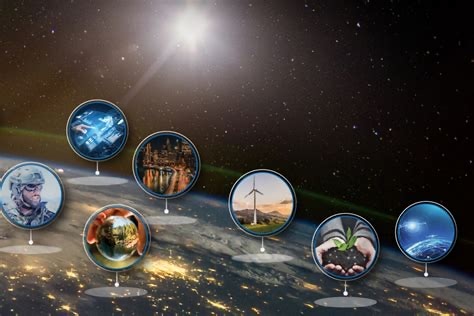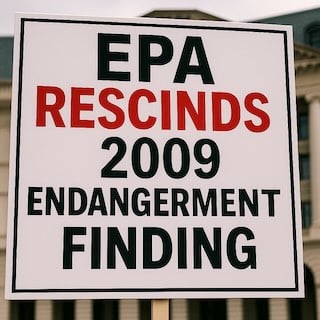Although initially focused on classified briefings, Defense Intelligence Document 36A refers to the public, unclassified testimony of Dr. Rod Schoonover, a senior analyst at the State Department’s Bureau of Intelligence and Research. Moreover, he presented this critical testimony before the U.S. House Permanent Select Committee on Intelligence in June 2019, specifically addressing the national security implications of climate change.
Key Takeaways from Document 36A
| Theme | Summary |
| Witness | Dr. Rod Schoonover testified as the Bureau of Intelligence and Research’s expert on climate security. |
| Date & Forum | Presented on June 5, 2019, during a hearing before the House Permanent Select Committee on Intelligence. |
| Focus | Assessed how climate change acts as a “national security threat multiplier.” |
| Core Factors | Highlighted four key variables that will determine future security impacts: |
- Rising greenhouse gas levels
- The interplay of simultaneous climate hazards
- Human and policy responses
- People’s exposure and vulnerability. |
| Purpose | Delivered context for how climate stressors interact with global security systems and vulnerable populations. |
Examination of climate change as a security multiplier by senior Bureau of Intelligence and Research analyst before the House Intelligence Committee, outlining four critical factors shaping future national security risks.
Executive Summary
A declassified U.S. intelligence assessment—known as Document 36A—states that “fundamental characteristics” of Earth’s systems are now moving “outside the bounds experienced in modern history.” Consequently, this conclusion, derived from the intelligence community’s environmental analysis, signals that climate, weather, sea levels, and ecological trends are shifting beyond any modern precedent, with far‑reaching implications for security and policy
Key Points
Spying on Climate: Inside the Intelligence Community’s Environmental Legacy
Forensic summary with source links
1. Historical Use of Intelligence Satellites for Environmental Research
- Cold War Origins: The CIA’s CORONA (and related ARGON, LANYARD) spy satellite programs (1960–1972) unintentionally captured valuable imagery of the Arctic, Antarctic, and other ecosystems. This created a trove of environmental data, later recognized for scientific value.
- MEDEA Program: In the early 1990s, then-Vice President Al Gore helped create the CIA’s Environmental Task Force, which evolved into MEDEA. MEDEA allowed civilian scientists controlled access to declassified imagery, without exposing intelligence sources or methods.
2. Integration of Climate in Intelligence Analysis
- National Intelligence Estimates (NIEs): Since the 1990s, the U.S. intelligence community (IC) has produced NIEs connecting environmental and security threats.
- Example: A 1999 NIE on Russia and regular Annual Threat Assessments (ATAs) after 2010 highlighted climate-driven migration, food/water risks, and Arctic geopolitics.
- Special Reports: The IC also produced special assessments on food security (2012), water, and climate extremes.
3. Continuity and Disruption Across Administrations
- Obama & Trump Eras: Both administrations published threat assessments referencing climate, food, and resource risks (ATA archive). Under Trump, some officials (e.g., Dr. Rod Schoonover) were reportedly pressured to downplay climate findings.
- Biden Administration:
- In 2021, the IC released its first formal NIE on climate, identifying climate as a major long-term security threat, but some critics noted its findings were conservative and de-emphasized in the report.
- Biden-era ATAs noted “geopolitical tensions over climate financing” (source).
4. 2025 Annual Threat Assessment: Omission of Climate
- The 2025 ATA—released under DNI Tulsi Gabbard—is the first since 2009 to omit mention of climate change, referencing only Arctic melting and competition.
- In a March 2025 Senate hearing, Senator Angus King questioned the omission. Gabbard stated the focus was on “direct threats to Americans,” minimizing climate’s role.
- At the same time, climate data was reportedly being scrubbed from U.S. government websites.
5. Call for Declassification of the 2008 NIE
- The Archive urges the release of a still-classified 2008 NIE on climate, said by former officials to be “far superior” to the 2021 public NIE (analysis).
- The official rationale for secrecy: to avoid international pressure for U.S. aid. Critics argue declassification could benefit vulnerable countries.
Summary Table
| Key Insight | Evidence/Source |
| Intelligence monitored climate for decades | CORONA & MEDEA overview |
| Climate integrated into threat assessments | ATAs 2010–2024 |
| 2025 marks a shift: climate omitted | 2025 ATA, omission coverage |
| Push for declassifying the 2008 NIE | Declassification call |
Forward-Looking Questions
- Will future IC reports restore climate coverage?
The next Annual Threat Assessments (2026+) will indicate if the 2025 omission is a new policy or an outlier. - Will the 2008 NIE be declassified?
Transparency advocates argue it would materially help at-risk countries and climate resilience planning. - What are the policy risks of omission?
Diminished public acknowledgment may undercut preparedness for climate-driven security threats.
Conclusion
This episode highlights how the U.S. intelligence community’s climate engagement has oscillated—from covert Cold War collection to public reporting, to a new period of omission and secrecy. The National Security Archive’s full briefing is recommended for anyone tracking the intersection of security, policy, and environmental transparency.
Original Source: National Security Archive, June 30, 2025
AI Transparency Statement
This blog post was prepared with the assistance of artificial intelligence (AI), specifically OpenAI’s ChatGPT. All summaries, analyses, and formatting are based strictly on publicly available, cited sources. No assumptions or interpretations were made beyond the evidence presented in those sources. All referenced links and quotes are provided for independent verification.








